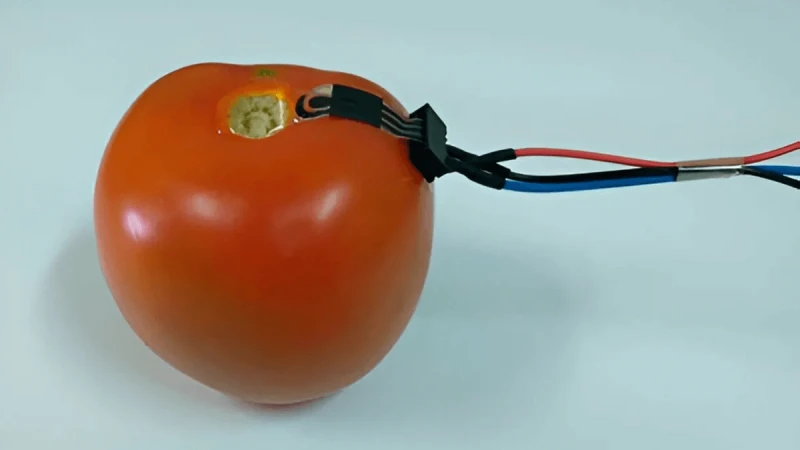Easy-to-use, biodegradable plant-based pesticide detector in development could provide an extra layer of food safety
Easy-to-use, biodegradable plant-based pesticide detector in development could provide an extra layer of food safety


Brazilian researchers have created a sensor that can be attached to the skin of fruits and vegetables to check for harmful pesticides. The sensor is made of cellulose acetate, a plant-based material that is biodegradable and eco-friendly.
The device could help ensure food safety in a world that faces food scarcity and health issues due to the excessive use of agrochemicals.
The study was published in the journal Biomaterials Advances.
The current methods to monitor pesticide levels are based on accurate chromatographic techniques, which have several limitations, such as the need for sample preparation, costly equipment, skilled personnel, long analysis time, and lack of mobility. The toxic waste generated by organic solvents is also an environmental concern.
“Our invention offers a better alternative. It is an electrochemical sensor that combines low cost, fast detection, small size, easy production, user-friendliness, high selectivity, and on-site pesticide detection. It can be directly applied to the surface of fruits, vegetables, or leaves. That’s why we call it plant-wearable,” said Paulo Augusto Raymundo-Pereira, the lead author of the paper and a researcher at the São Carlos Physics Institute (IFSC-USP).
Farmers can monitor pesticide levels in their fields, ensuring the appropriate amount is applied to each crop or section of a plantation. This can lead to reduced pesticide use while maintaining high yields, ultimately resulting in lower prices for consumers.
This is an excerpt. Read the original post here

 | Videos | More... |

Video: Nuclear energy will destroy us? Global warming is an existential threat? Chemicals are massacring bees? Donate to the Green Industrial Complex!
 | Bees & Pollinators | More... |

GLP podcast: Science journalism is a mess. Here’s how to fix it

Mosquito massacre: Can we safely tackle malaria with a CRISPR gene drive?

Are we facing an ‘Insect Apocalypse’ caused by ‘intensive, industrial’ farming and agricultural chemicals? The media say yes; Science says ‘no’
 | Infographics | More... |

Infographic: Global regulatory and health research agencies on whether glyphosate causes cancer
 | GMO FAQs | More... |

Why is there controversy over GMO foods but not GMO drugs?

How are GMOs labeled around the world?

How does genetic engineering differ from conventional breeding?
 | GLP Profiles | More... |

Alex Jones: Right-wing conspiracy theorist stokes fear of GMOs, pesticides to sell ‘health supplements’




 Viewpoint — Fact checking MAHA mythmakers: How wellness influencers and RFK, Jr. undermine American science and health
Viewpoint — Fact checking MAHA mythmakers: How wellness influencers and RFK, Jr. undermine American science and health Viewpoint: Video — Big Solar is gobbling up productive agricultural land and hurting farmers yet providing little energy or sustainabilty gains
Viewpoint: Video — Big Solar is gobbling up productive agricultural land and hurting farmers yet providing little energy or sustainabilty gains Fighting deforestation with CO2: Biotechnology breakthrough creates sustainable palm oil alternative for cosmetics
Fighting deforestation with CO2: Biotechnology breakthrough creates sustainable palm oil alternative for cosmetics Trust issues: What happens when therapists use ChatGPT?
Trust issues: What happens when therapists use ChatGPT? 30-year-old tomato line shows genetic resistance to devastating virus
30-year-old tomato line shows genetic resistance to devastating virus California, Washington, Oregon forge immunization alliance to safeguard vaccine access against federal undermining
California, Washington, Oregon forge immunization alliance to safeguard vaccine access against federal undermining The free-range chicken dilemma: Better for birds, but with substantial costs
The free-range chicken dilemma: Better for birds, but with substantial costs ‘You have to treat the brain first’: Rethinking chronic pain with Sanjay Gupta
‘You have to treat the brain first’: Rethinking chronic pain with Sanjay Gupta
